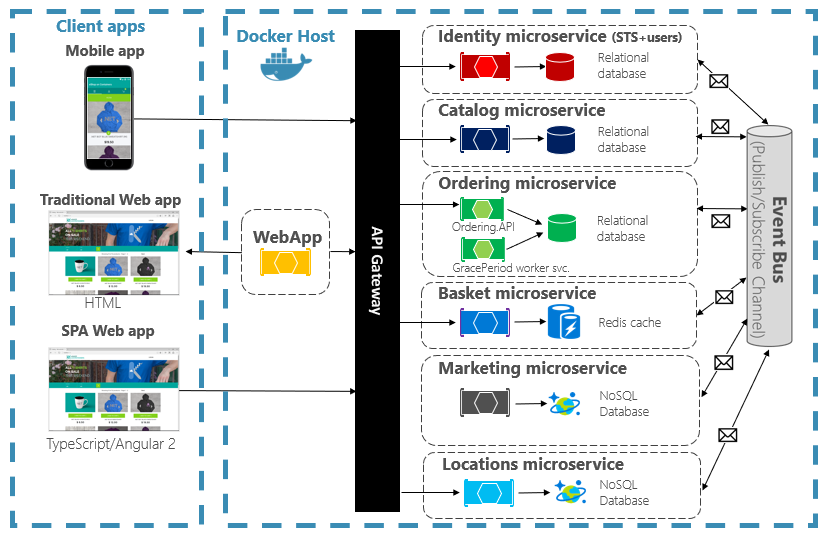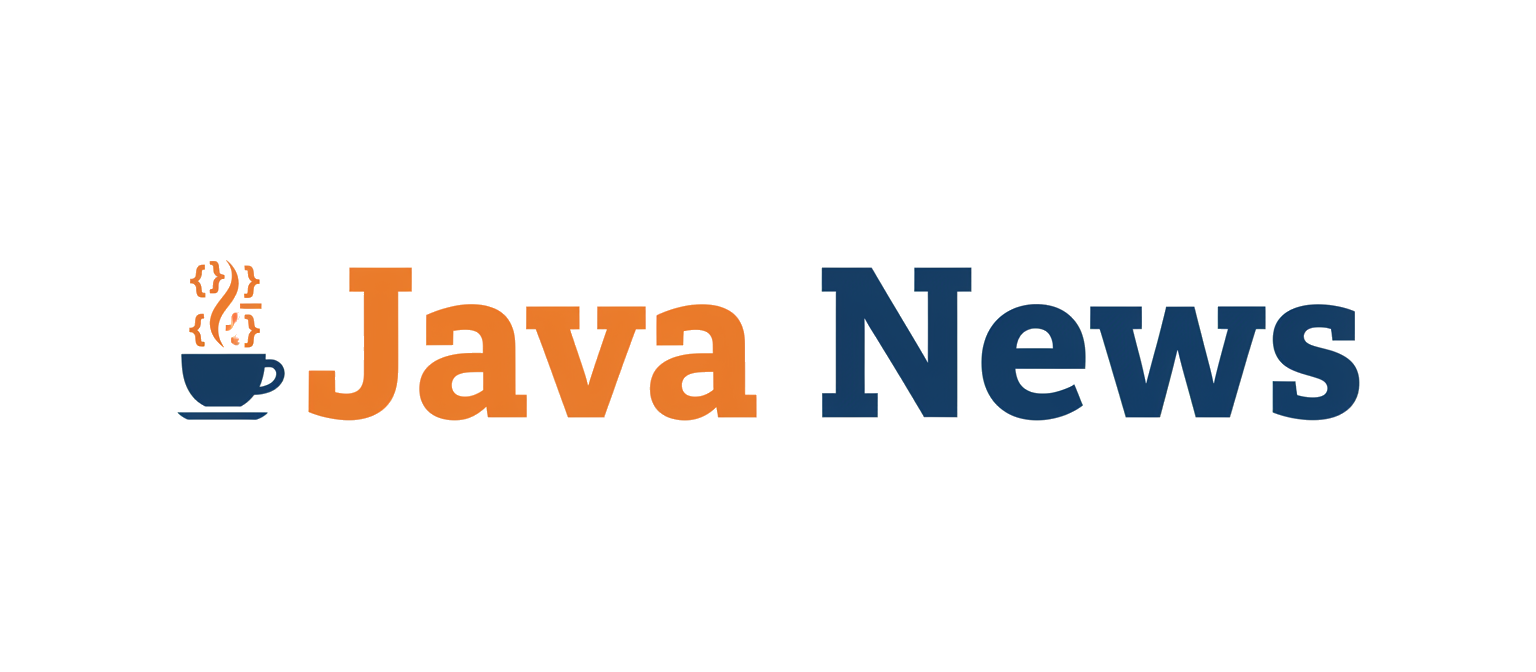The Java ecosystem is in a constant state of vibrant evolution, and nowhere is this more apparent than in the enterprise space. Far from being a stagnant technology, enterprise Java, now under the stewardship of the Eclipse Foundation as Jakarta EE, is rapidly modernizing to meet the demands of cloud-native architectures, microservices, and reactive programming. Recent developments, particularly around the upcoming Jakarta EE 11 specification and the innovative runtimes implementing it, signal a significant leap forward. This flurry of Jakarta EE news is not just about version numbers; it’s about fundamentally improving developer productivity, application performance, and scalability.
In this article, we’ll explore the latest and greatest in the world of enterprise Java. We will dissect the key themes of Jakarta EE 11, see how pioneering runtimes like Open Liberty are providing early compatibility, and dive into how frameworks like Helidon are revolutionizing concurrency with Project Loom’s virtual threads. We’ll examine practical code examples, discuss best practices, and place these updates within the broader context of the thriving Java ecosystem news, touching on everything from build tools to the latest JVM news. Whether you’re a seasoned enterprise developer or new to the space, these updates are poised to reshape how we build robust, high-performance Java applications.
The Road to Jakarta EE 11: Modernization and Virtual Threads
The journey from Java EE to Jakarta EE marked a pivotal moment, moving the platform to a more open, community-driven governance model under the Eclipse Foundation. The most visible change was the namespace shift from javax.* to jakarta.*, but the real transformation lies in the platform’s accelerated evolution. Jakarta EE 10 laid a strong foundation by establishing a baseline with Java SE 11. Now, Jakarta EE 11 aims to push the envelope further, aligning with modern Java SE releases like Java 17 and Java 21 and embracing new paradigms for concurrency and development.
Key Themes Driving Jakarta EE 11
Jakarta EE 11 is being shaped by several core principles. A primary goal is to fully embrace CDI (Contexts and Dependency Injection) as the central programming model, moving towards a “CDI-first” approach across all specifications. This simplifies development by providing a consistent, powerful dependency injection framework. Another major theme is modernization. This involves pruning older, less-used APIs and updating existing ones to better support modern application patterns. For instance, Jakarta Concurrency is a prime candidate for an overhaul to natively support the virtual threads introduced in Java 21 via Project Loom. This update, a hot topic in Java concurrency news, promises to simplify asynchronous programming and dramatically improve the scalability of I/O-bound applications without the complexity of reactive frameworks.
A Glimpse of Modern Jakarta EE Code
While the Jakarta EE 11 specification is still being finalized, we can look at a modern Jakarta EE 10 application to understand the direction. The code is clean, declarative, and heavily reliant on annotations. Here is a simple Jakarta REST (JAX-RS) resource that uses CDI to inject a service. This pattern will only become more prevalent and powerful in Jakarta EE 11.
package com.example.api;
import jakarta.enterprise.context.ApplicationScoped;
import jakarta.inject.Inject;
import jakarta.ws.rs.GET;
import jakarta.ws.rs.Path;
import jakarta.ws.rs.Produces;
import jakarta.ws.rs.core.MediaType;
import jakarta.ws.rs.core.Response;
// A simple service managed by CDI
@ApplicationScoped
class GreetingService {
public String getGreeting() {
return "Hello from Jakarta EE!";
}
}
@Path("/hello")
@ApplicationScoped // This resource is a CDI bean
public class HelloResource {
@Inject
private GreetingService greetingService; // CDI injects the service
@GET
@Produces(MediaType.APPLICATION_JSON)
public Response sayHello() {
String message = greetingService.getGreeting();
// Simple JSON response
return Response.ok("{\"message\": \"" + message + "\"}").build();
}
}
This example showcases the synergy between Jakarta REST and CDI. The HelloResource is managed by the CDI container, which automatically injects an instance of GreetingService. This decoupling is a cornerstone of modern enterprise development and a key focus for future enhancements.
Open Liberty: Leading the Charge with Jakarta EE 11 Compatibility
In the competitive landscape of application runtimes, Open Liberty has carved out a niche as a fast, flexible, and developer-friendly server. Backed by IBM, it is a fully open-source implementation of both Jakarta EE and MicroProfile specifications. One of its standout features is its “zero-migration” architecture, allowing developers to update the runtime without changing their application code. This philosophy extends to its aggressive adoption of new standards, making it one of the first runtimes to offer compatibility with upcoming Jakarta EE 11 specifications.
Experimenting with the Future, Today
Open Liberty’s development team provides regular “beta” releases that include implementations of draft Jakarta EE 11 specifications. This is a massive benefit for the community. Developers can start experimenting with new features, provide crucial feedback to specification leads, and prepare their applications for the official release. This proactive approach accelerates the adoption cycle and ensures the final specifications are robust and well-tested in real-world scenarios. This is a prime example of positive OpenJDK news and community collaboration in action, benefiting the entire ecosystem.
Configuring an Open Liberty Project
Setting up a project to use these new features is straightforward with build tools like Maven or Gradle. The key is to configure the Open Liberty Maven plugin and specify the desired Jakarta EE version in your dependencies. Below is a snippet from a pom.xml file for a project targeting Jakarta EE 11 features on Open Liberty.
<?xml version="1.0" encoding="UTF-8"?>
<project xmlns="http://maven.apache.org/POM/4.0.0"
xmlns:xsi="http://www.w3.org/2001/XMLSchema-instance"
xsi:schemaLocation="http://maven.apache.org/POM/4.0.0 http://maven.apache.org/xsd/maven-4.0.0.xsd">
<modelVersion>4.0.0</modelVersion>
<groupId>com.example</groupId>
<artifactId>liberty-jakarta11-app</artifactId>
<version>1.0-SNAPSHOT</version>
<packaging>war</packaging>
<properties>
<maven.compiler.source>21</maven.compiler.source>
<maven.compiler.target>21</maven.compiler.target>
<project.build.sourceEncoding>UTF-8</project.build.sourceEncoding>
<liberty.maven.plugin.version>3.9</liberty.maven.plugin.version>
</properties>
<dependencies>
<!-- Use the Jakarta EE 11 Core Profile API for compilation -->
<dependency>
<groupId>jakarta.platform</groupId>
<artifactId>jakarta.jakartaee-core-api</artifactId>
<version>11.0.0-M2</version> <!-- Example milestone version -->
<scope>provided</scope>
</dependency>
</dependencies>
<build>
<plugins>
<plugin>
<groupId>io.openliberty.tools</groupId>
<artifactId>liberty-maven-plugin</artifactId>
<version>${liberty.maven.plugin.version}</version>
<configuration>
<!-- Use a Liberty runtime version that supports Jakarta EE 11 features -->
<runtimeArtifact>
<groupId>io.openliberty</groupId>
<artifactId>openliberty-runtime</artifactId>
<version>24.0.0.3-beta</version> <!-- Example beta version -->
<type>zip</type>
</runtimeArtifact>
</configuration>
</plugin>
</plugins>
</build>
</project>
To enable specific features, you configure Open Liberty’s server.xml. This file defines which parts of the Jakarta EE platform are loaded, contributing to the server’s fast startup times and low memory footprint.
<?xml version="1.0" encoding="UTF-8"?>
<server description="new server">
<!-- Enable features -->
<featureManager>
<!-- This feature enables a bundle of Jakarta EE 11 Core Profile features -->
<feature>jakartaee-core-11.0</feature>
</featureManager>
<!-- HTTP endpoint configuration -->
<httpEndpoint id="defaultHttpEndpoint"
host="*"
httpPort="9080"
httpsPort="9443" />
<!-- Define the web application -->
<webApplication location="liberty-jakarta11-app.war" contextRoot="/my-app" />
</server>
Helidon Níma: A New Paradigm with Virtual Threads
While Open Liberty pushes the boundaries of standard specifications, Oracle’s Helidon project is exploring new architectural frontiers. Helidon is a cloud-native, open-source set of Java libraries for writing microservices. Its latest major version introduces Níma, a web server built from the ground up on the principles of Project Loom. This represents some of the most exciting Java virtual threads news in the enterprise space.
Blocking Code, Non-Blocking Performance

For years, the Java community has pursued asynchronous, non-blocking I/O to handle massive concurrency, leading to the rise of reactive programming. While powerful, reactive code can be complex, leading to “callback hell” and a steep learning curve. Helidon Níma offers a compelling alternative. By running every request on a virtual thread, it allows developers to write simple, synchronous, blocking-style code while achieving the scalability of a non-blocking server. The JVM and the Níma server handle the magic of parking the virtual thread during I/O operations without consuming a precious OS thread. This is a game-changer for developer productivity and a major highlight in Reactive Java news, as it offers a different path to the same goal.
A Helidon Níma “Hello World”
The programming model in Helidon Níma is more direct and less declarative than in Jakarta EE. You build and start the server programmatically. The following example demonstrates a basic web server that responds to a GET request, showcasing the simplicity of the API.
package com.example.helidon;
import io.helidon.webserver.WebServer;
import io.helidon.webserver.http.HttpRouting;
public class Main {
public static void main(String[] args) {
// Start the server and wait for it to start
WebServer server = WebServer.builder()
.routing(Main::routing) // Configure routing rules
.port(8080)
.build()
.start();
System.out.println("Helidon Níma server is up! http://localhost:" + server.port());
}
/**
* Set up the routing rules.
* @param rules the routing rules
*/
static void routing(HttpRouting.Builder rules) {
rules.get("/greet", (req, res) -> {
// This handler runs on a virtual thread.
// You can write simple, blocking code here.
res.send("Hello from Helidon Níma!");
});
}
}
Notice the lack of complex asynchronous APIs. The lambda handler for the /greet path is straightforward. If this code were to call a database or another microservice, it could use traditional blocking I/O, and Níma would ensure the underlying OS thread is freed up, allowing it to serve other requests. This is the core promise of Project Loom realized in a modern Java framework.
Best Practices and the Broader Java Ecosystem
These advancements in Jakarta EE and its runtimes don’t exist in a vacuum. They are part of a larger, interconnected ecosystem. For developers, staying current means not only understanding new framework features but also adopting modern best practices and tooling.

Tooling and Integration
The choice between Jakarta EE and other frameworks like Spring Boot is often a matter of preference and project requirements. The latest Spring Boot news shows it is also embracing virtual threads, demonstrating a convergence of ideas across the ecosystem. Tools like JHipster are invaluable for bootstrapping modern applications, offering generators for both Spring Boot and Jakarta EE (via Quarkus), reducing boilerplate and enforcing best practices from the start. For data persistence, the latest Hibernate news often revolves around improved performance and compatibility with the latest Jakarta Persistence (JPA) specification, which is a core part of Jakarta EE.
Essential Best Practices
- Embrace Dependency Injection: Whether using CDI in Jakarta EE or Spring’s IoC container, dependency injection is fundamental for building maintainable, testable applications.
- Containerize Everything: Package your applications as Docker or Podman images. This ensures consistency across development, testing, and production environments and simplifies deployment to cloud platforms.
- Write Comprehensive Tests: The foundation of any robust application is a strong test suite. The latest JUnit news (JUnit 5) and Mockito news highlight powerful features for testing modern Java applications, including support for dependency injection and asynchronous code.
- Monitor Performance: With new concurrency models like virtual threads, understanding application performance is critical. Use profiling and monitoring tools to identify bottlenecks and optimize resource usage. This is a key aspect of Java performance news.
- Stay Informed: The pace of change is rapid. Following Java SE news from sources like Adoptium, Azul Zulu, or Oracle Java updates is crucial for leveraging the latest JVM features and security patches.
Conclusion: The Bright Future of Enterprise Java
The latest Jakarta EE news paints a clear picture: enterprise Java is more dynamic and innovative than ever. The upcoming Jakarta EE 11 specification promises to modernize the platform, with a strong focus on CDI and alignment with the latest Java SE features. Visionary runtimes like Open Liberty are bridging the gap to the future by providing early-access implementations, allowing the community to engage with and shape the next generation of enterprise standards. Simultaneously, frameworks like Helidon are pushing the boundaries of what’s possible on the JVM, leveraging Project Loom to deliver a new paradigm of simplified, highly scalable concurrent programming.
For Java developers, this is an exciting time. The ecosystem offers a rich tapestry of tools, frameworks, and specifications to build anything from monolithic applications to sophisticated microservice architectures. The key takeaway is to embrace this evolution. We encourage you to download a beta of Open Liberty, experiment with Helidon Níma, and explore how virtual threads can simplify your code. By engaging with these technologies today, you can prepare for the future and continue to build powerful, resilient, and performant applications on the Java platform.

